#worldofrelics research notes
Text
Sketchfab NPR Illustration and Comic Examples
Topwebcomics was a bit of a bust (only found a few sfw 3D comics, not as good as Dreamland Chronicles tho), but Sketchfab has better examples of what I'm looking for. Most of these are 3D illustrations, however they look really good compared to what I found on Topwebcomics.
Here are a few NPR Illustrations a bit closer to my style:
These two I feel match up with WOR's style. Note: I am looking at how it's textured, shaded, and modeled/sculpted. Not related subject matter.
Objectkind/props (nonliving):
Humans/Gods:
Environments (oh boy, might need to take a course on this one):
Ambitious goal? Yes...oh yes.
#mystuff#3d resources#npr#nonphotorealistic rendering#blender#maya#3dcoat#substancpainter#worldofrelics research notes#wor research notes#sketchfab#character design#worldofrelics#environment design#prop design
0 notes
Text
Thinking about returning to my NPR (nonphotorealistic rendering) research for my WOR style guide thingy.
Fell off of it last year, but since I'm working on these three characters here, it's important to remind myself of the goals for WOR's style.
Also, need to make a moodboard and media example list for WOR's fantasy 3D/2D aesthetic.
With this said, guess what I found recently!
So, I was revisiting an old webcomic I had read in my teens called The Dreamland Chronicles by Scott Christian Sava. This site is currently an archive of the 3D comic series that started in 2006. If you visit, just know that some of the pages, both the old 3D comic and the 2016 drawn comic, are either missing or misplaced throughout the site. I'm not sure if this site is still updated or maintained.
I found a series of pages that explained how The Dreamland Chronicles was made. Pages start here! This gives me a good starting point for developing and designing 3D characters, environments, and assets for a comic. The only thing that's missing is the render time (the style is similar to most 3D animation during the early 2000s on a 3D Studio Max version during that time) and how they organize all the files.



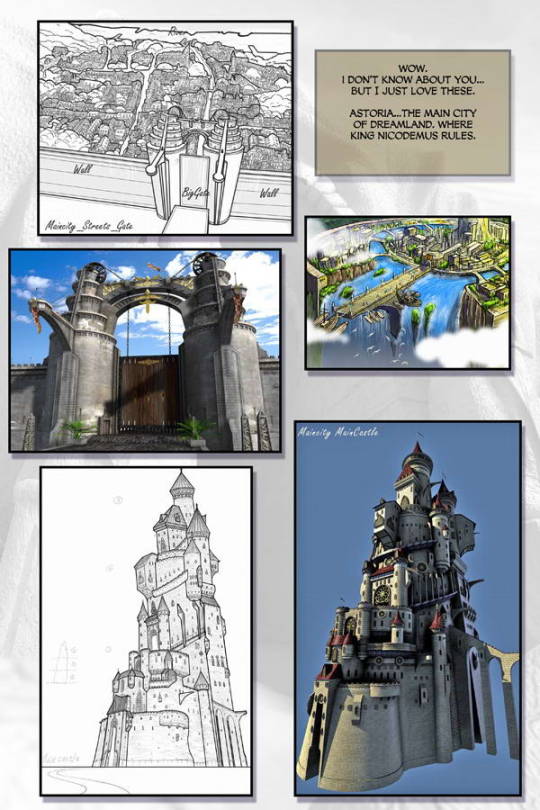
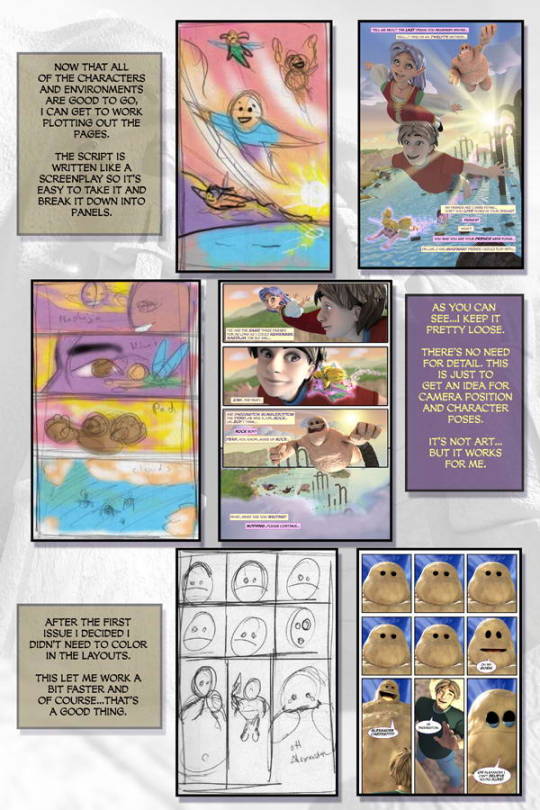

I did check the comments under one of these pages on the site and the creator did mention that (mind you, this was back in 2008 with 2000s 3D software) it took either a few hours or days to render a single frame. Nowadays, Blender, Maya, 3D Studio Max, and other 3D software are more advanced, so something like this would take half the time on a good computer rig.
Got some more information about the comic from the FAQ section here. It's no longer on the main site, but still accessible on the Wayback Machine.
What I found interesting is that once all the characters, sets, environments, and other assets are completed, it takes about a day or so to create a page. Depending on what the scene calls for, maybe more pages created within a day. Back when Dreamland Chronicles was running, the comic updates five times per week.
~ I mean, still, there's render time. So maybe, pages were created one week, then rendered out while the next pages were created, and so on?
Considering this comic's semi-realism style, yeah, that render time is going to take a while.
For WOR's style, I'm going for a cel-shaded 3D style similar to my own drawn style.
Example, my Spoon Ballerina character from last year, from concept to 3D model. Note: the 3D render on the right was less than a minute for a single character and plane using EVEE (Blender 4.0).

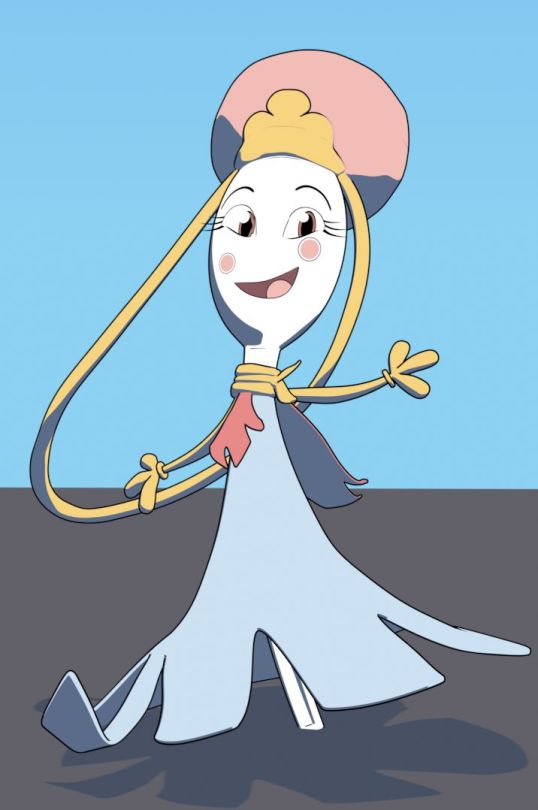
Another example is the anime 3D models by Bran Sculpts like the one below:
youtube
Both examples use Blender, and while Bran uses Blender's emission shader nodes to create the flat colors and shadows (with painted shadows), the Lightning Boy Shader I use also works off of emission nodes. Lightning Boy has the advantage of layer shader nodes, thus simplifying the setup for more complex models. The painted shadows I might had to do for certain areas of the character depending on how they are lit in an environment.
Rendering time might not take long for these- hang on
Downloaded and rendered the Akko rig - in less than half a minute. That's just with one character, tho, how long would it take with a full scene with a fully modeled environment? Idk, but maybe time might not be an issue for this style lol. And the character models might not need a high poly count for rendering, either. Interesting!
The most time-consuming thing I could see for WOR's style is modeling and texturing (gods, humans, all mimic/war and civilian object types, assets, environments, etc) per issue for Rise of Relics (maybe for months depending). Setting up for a scene (for panels and so on) might not take long at all...
#mystuff#npr#nonphotorealistic rendering#blender#blender 3d#3ds max#dreamland chronicles#webcomics#3d modeling#wor research and inspo#worldofrelics research notes#worldofrelics#art#bran scuplts#Youtube
1 note
·
View note
Text
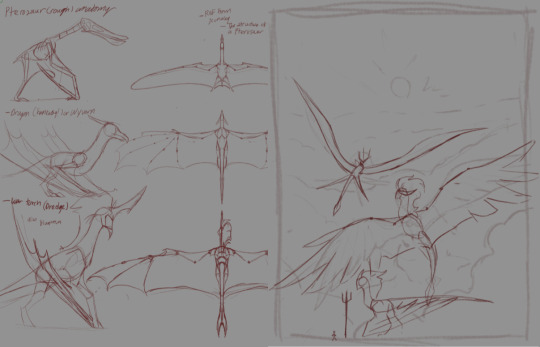
I'm back working on Altostratus' cover with Queen Nike (she/her) and Flammagenitus (she/they)! The thumbnail sketch for the cover is on the right, and on the left are quick anatomy sketches of a pterosaur, wyvern, and modern dredge war-torch.
Long lore post, more notes below!
So, initially, I wanted Flammagenitus to have large feathered wings made of metal. But I had no idea how to translate "feathered wings" to "armored wings" in her visual design. There's, like, a lot of stuff I need yet to figure out about the design of my WOR objectocs in Rise of Relics and The Mundane Realm settings: what era their forms would be the most common, how contflict, resources, and other factors affect the how living objects develop their civilian, worker, and war object groups, and so on. Then there are the cultures that inspired these elements and how to best represent them, even as inspiration for fantasy worldbuilding about talking object people. Something I really need to take time to sit down and think about before going deeper into writing.
I mean, I'm already knee-deep in it, but I'm welcome to rewrite stuff.
Anyway, I do know from my worldbuilding that the first living objects had cores that looked close to their original non-living forms before the Inversion Event. So, Nikey in RFR is just a trident with some mild modifications to allow ichor to create her face and wings, or at least the ichor structure to support her cloth wings. In centuries after the Inversion Event, objects and relics developed modifications to customize their cores, thus the Refitting Process was born.
Without going on too long, the Refitting Process was popular among the relics during the Age of Relics (0-500 AFR). The Hidden Age (500-1800 THA) was when the Refitting Process peaked during the Relic Wars, a time in which relickind fought amongst themselves over the fate of objectkind. The relics used refitting to make themselves more powerful, massive, and greater than their smaller forms. Led by the Great Spear Apollyon, some relics believed their lost divinity could be remade through this process. However, not all relics desired this and rather want to put an end to this war. Queen Nike worked with objectkind to build a powerful weapon to destroy the enemy relics. That weapon was Flammagentius, the first war-torch refitted from a living paintbrush.
:D Lore dumping yay! (Date format might change later, tho)
Anyway, so about Flammagenitus' design: well they are huge, I think I have their current size to be around 2080.2cm/68 feet…might update it later but yeah she's big. Since they were designed by Queen Nike and her relics, along with objectkind, there might be possible influence from Nike's culture prior to the Inversion Event.
Nike, or originally NIkey, was an Antiquan goddess. Her home, Antiqua, was inspired by Ancient Greece (around the Hellenistic period maybe need to look at my notes later ahhh). You can see her goddess form here! She was based on the Greek goddess Nike, the Goddess of Victory, and her goddess design was based on the Greek Hoplite.
So, for ideas of Flammagenitus' and future war-torch design:
Influence will be heavily Ancient Greece due to Queen Nike, but might borrow a few things from Ancient Rome since Flammagentius is a future ruler of Jazera (Rome inspired) which later splintered into smaller kingdoms after her death.
Greek helmets such as the Attic, Corinthian, or Chalcidian styles for her head design. Needs to allow some room for her jaw to move for her devastating killer bite.
Pterosaur-inspired wing design with a little bit of dragon in it. Also, using the pterosaur anatomy with the arms for greater support for Flammagenitus' heavy fuselage(?) and the ichor engine within it. Modern dredge war-torches have lighter construction but still have a heavy ichor engine.
Sidenote: Ichor engines are powered by unfettered ichor harvested from the ichor wells, deep pits in the earth full of ichor. It's the same thing that living objects have for limbs, but it contains enormous amounts of energy trapped within it. Can't be consumed or else it will cause Burnout (a condition that kills a living object with uncontrolled magic)
The modern dredge war-torch mentioned earlier in this post will come about two thousand years later, its role is to cause as much damage to castles and fortresses or to fight other dredge war-torches as an anti-air defense. They, and their monolith counterparts, are smaller than Flammagentius. This is due to the relic technological magic that was used to refit Flammagentius was lost during The Relic Wars. A refitted core that Flammagentius had would put far too much stress on a dredge's ichor structure, increasing the chance of internal damage.
Here are some war-torch designs with more bird-like anatomy from last year. These I might use for smaller war-torches for aerial attacks in battle.


Might do more research on the wing thing or I can just default to ichor limbs shifting into wing appendages. We'll see.
#worldofrelics#objectxenofiction#my art#wip#objectoc#sketches#wyvern#pterosaur#speculative biology#greek art#worldbuilding#worldbuilding notes#dragon#war-torch#wor research and inspo reblogs
8 notes
·
View notes
Text
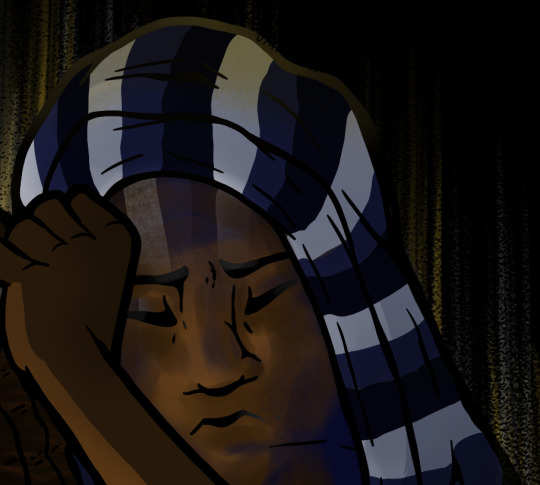

Blacktober Week 1- Medusa and Eshu (actually done, but here's one more wip buffer post lol)
Even though most of my characters were loosely inspired by figures from different cultures/myths, it's important to be careful in how I represent them. Even if loosely or referenced from their source inspirations.
Originally for this character, I had no idea what name I wanted for him. I was bouncing between either Greek or Biblical names, then had thought of using "Merlin" for this character, etc. This character in his earliest variations was just a magic user who, at the end of the world, befriended Medusa after she appeared in his village one day.
But later on, as my thoughts around the setting of The Mundane Realm, and World of Relics as a whole developed, I wanted this character to be more than a mere wizard but a guide, sharing the responsibility of humanity's fate with Medusa. One lives, and the other follows. One dies, and the other follows. Through it all, Medusa and Eshu lay down the paths for humanity to survive in a world dominated by ichoridic monsters.
With this little tidbit in mind, I settled on Eshu from the Yoruba religion. I'm still researching more about Eshu. In Yoruba belief, Eshu is the mediator between the Earth and the Heavens. He is a messenger, trickster, guide, and teacher.
To be brief and without spoiling much, Eshu guides Medusa in TMR. Both as her aid (she's blind thanks to a certain [WOR's big fucking spolier]) and as her trusted companion. No matter what incarnations Eshu goes through as a living object, Medusa always trusts him to rediscover his heart to help lead humanity alongside her. With his memories of each past life, Eshu knows much of the world of mimickind: its kingdoms, societies, histories, and cultures.
Anyway, back to the two images above. I was going to have Eshu be a blue cloak, but considering his source inspiration, I decided to use his symbolic colors red and black (sometimes white? Not sure, but it pops up occasionally, tho).
#mystuff#blacktober#blacktober 2023#really sorry if I clog the tag with this wip this is the final update for it#it's complete just want to post this for more context on this character#yoruba#eshu#eshu yoruba#sketches#my art#worldofrelics#themundanerealm#medusa#tmr medusa#tmr eshu#mimickind means the same thing as objectkind; it's just how humans call living objects = mimics#objectoc#world of relics research notes#character design#blue was initially chosen because I was looking into african textiles and found out about aso oke ~also Yoruban#...It's weird how I feel I know more about Greek/Euro stuff than anything from African and its various peoples and cultures and traditions#I really need to take time to know where I and my people came from but I have no idea where to start#yeah looking in america's history is not great for obvious reasons#all that we were was nothing more; so we had to start anew here with what we could scrounge up#realizing that sucks
2 notes
·
View notes
Text

I posted 214 times in 2022
That's 91 more posts than 2021!
59 posts created (28%)
155 posts reblogged (72%)
Blogs I reblogged the most:
@penwrythe
@cym-k
@regal-bones
@gittetj
@sarroora
I tagged 152 of my posts in 2022
Only 29% of my posts had no tags
#queue - 53 posts
#objectxenofiction - 42 posts
#xenofiction - 40 posts
#worldofrelics - 38 posts
#themundanerealm - 32 posts
#object xenofiction - 31 posts
#characterdesign - 29 posts
#xenofiction worldbuilding - 25 posts
#objectoc - 25 posts
#xenofiction art - 25 posts
Longest Tag: 135 characters
#...wait are all objectshows technically xenofiction? or at least the ones that explore objects as objects but not stand-ins for humans?
My Top Posts in 2022:
#5

Update on Sylvania the Elven Ground Staff!
Finally inking her!
Just working through my backlog of WIPs
Initial drawings and refined design
6 notes - Posted March 3, 2022
#4
Feedback Needed on a thingy!
Hi everyone, this is Penwrythe and I would like to get some feedback on something!
Over the past three years, I have been working on my worldbuilding project, World of Relics! This setting has sub-worldbuilding projects: Rise of Relics and the Mundane Realm. World of Relics features living objects in a high fantasy setting. They are kind of like the classic fantasy mimics from RPG games and stories, just without the flesh-eating part, lol.

See the full post
8 notes - Posted January 29, 2022
#3
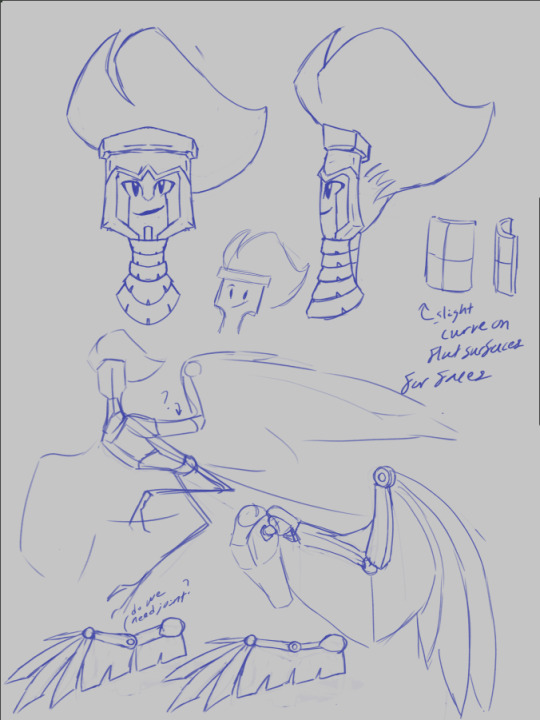

Update on Pyroblast the War-Torch (Paintbrush II fanart)
I sketched out their facial and head anatomy. I like a naturalistic style with my object characters, so I added a slight curve on Pyroblast's head. I also gave them a fuller pompadour bristle style, too! Details below!
Wing anatomy was something I was stuck on for a bit, mostly because I was bouncing between robotic wings vs a more naturalistic bird-like wing. While designing this, I realized that polearm war-objects like Pyroblast would need some protection on their wing joints and shoulder. So I added a pauldron over the should joint that overlaps with the start of the wing and a segmented couter(?) at the elbow. I also added segmented bands over the metal primary feathers of Pyroblast's wing.
As for the material makeup of a polearm's anatomy: Both flying and ground polearms are made of strong light metals and wood. The wings of a flying polearm are made up of aluminum/thin steel sheets (still researching this) enchanted with spells to strengthen them for combat, flight, and high temperatures. Pyroblast is a Heavy Class General Dread-torch, so their materials need to handle stress from high heat from their fire magic, extreme turbulence from the dynamic flight, and from any attacks from other Dread-torches.
Lower rank war-torches are mostly for aerial attacks on ground armies, while Dread-torches are castle destroyers. Castles would need defense against Dread-torches, either from using Dread-torches of their own (provided from their kingdom's capital, usually for heavily targeted castles) or using other means of anti-air defense.
I'm thinking about using this design for future flying polearms set in the Mundane Realm. For RFR, I might use a more simplified style to show how the first flying polearms still kept most of their original weapon shape before the Inversion Event.
9 notes - Posted January 11, 2022
#2

Broken Mirror - Bygone Era
Feat. Goddess Nikey
Side A
Details!!!
See the full post
10 notes - Posted August 25, 2022
My #1 post of 2022


See the full post
18 notes - Posted April 18, 2022
Get your Tumblr 2022 Year in Review →
#tumblr2022#year in review#my 2022 tumblr year in review#your tumblr year in review#that last post#I have plans for Sylvania's design....!#let's say it's a long road but the beginning stages of finally putting all my design research together ahahhahahaha
4 notes
·
View notes
Text
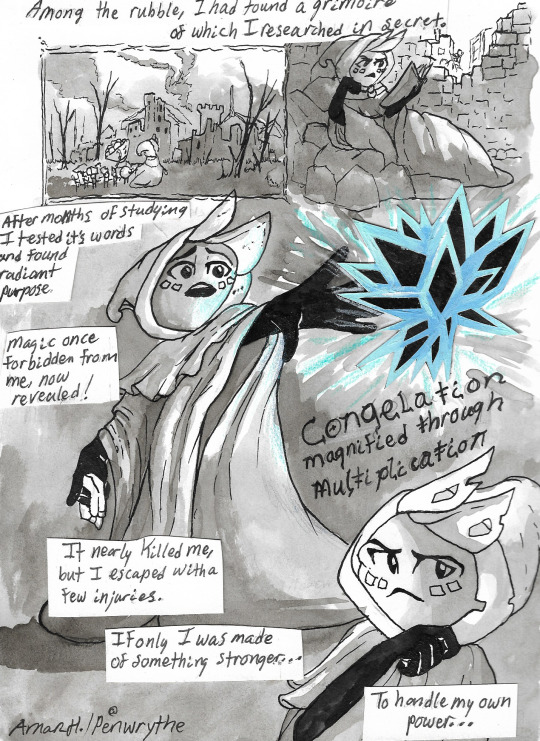
A short mini-comic about Gwuenevere casting her first spell at 32. It did not go well.
Ink and ink wash for the majority of this sketch. Acrylic paint and ink for the crystal.
Detailed ID in the image.
And a special blurb that inspired this below the readmore! Warning, it's a bit rough, so mispellings and typos abound! CW for self-injury, body horror, and near-death.
Behind the broken walls of her abbey, Gwuenevere discovers an old but rare grimoire of war magic shortly after her village, Golden Peaks, was invaded by Janthizerains. The grimoire is a small but dense old book that is partially burnt with its spine broken. At first, Gwuenevere noticed that the book once belonged to a royal who somehow lost it in Golden Peaks since its founding about two hundred years ago. But thanks to her naturally strong curiosity, Gwuenevere sought to repair the book herself, so to keep her ownership of it secret, and learn war magic from its pages.
But there’s a problem, Gwuenevere is a fragile object. A light and thin cloak made of cotton and lace. A form so vulnerable to fires and tears, which makes learning magic quite difficult. Any form of magic could harm her, or worst, kill her. For most of her life, Gwuenevere wears a magical suppressor to protect herself from her own magic. But she is determined, she hated being so helpless watching her own village burn under the flames of the Janthizerain war-torches. Imagine fighting against the swords or shields and stopping them in their tracks. Or better, stopping an entire army with power unmatched by any other war-object.
For a few months, while her village is rebuilt, Gwuenevere read the book in secret at night while all the other altrices and curios are asleep. She managed to secure a private study to research in. But there’s another obstacle, how could she cast magic without it destroying herself.
Hardy objects have solid strong cores and their ichor structure is denser with their materials. To cast magic, they must loosen their ichor structure to make their magic flow more easily. There's also the fact that they don't have to repair themselves more often from injuries or damages. Using advanced training, they could push themselves further to master all sorts of powerful and dangerous magic. Core and ichor strength training is paramount for any hardy object seeking to become a war-object.
Fragile objects are the opposite: their magic flows far too easily due to having softer or fragile cores that in turn weaken their ichor structure and increase the chance of serious injury. Fragile objects must repair themselves more often than hardy objects. A simple light spell for a hardy object could cause a fragile object to spontaneously combust should they cast it.
Realizing these limitations, Gwuenevere can't strengthen her core to better tolerate the way magic can affect her. But she could strengthen her ichor. Training under normal means is out of reach for her, for obvious reasons, but she could use her own head to think of something clever. What if she could thicken her ichor without using magic or advanced training?
Sometime later, Gwuenevere found that one of the tasks she does around the library of the Golden Peaks Abby could be the answer. Sometimes, the young curios living in the abbey play rough around the halls and rooms, knocking things over and making a mess. Gwuenevere, often the one who babysits the rambunctious curios would have to make sure anything that's fragile is safe in its containers before the curios playtime begins. She would use boxes, containers, and other means to keep things tidy and safe. One of which, a curious packing box surrounded by soft padding filled with thick liquid, is often used for protecting delicate things. When dropped, the padding would hit the floor and the liquid would suddenly thicken up as it absorbs the shock of the impact.
This simple discovery later has Gwuenevere research how to "thicken" her ichor using a technique called shifting. All living objects shift their ichor whenever they move their limbs. It's a natural thing, but true creative shifting for the purpose of changing the shape of the ichor structure beyond its usual use is what Gwuenevere is looking for. Most known knowledge of basic shifting is available for civilians while more advanced knowledge is held for all workers and war-objects, often used as a part of ichor strengthening training. But understanding the basic concepts of shifting allowed Gwuenevere to understand how to move the mass and volume of her ichor throughout her ichor structure.
It was a difficult and slow thing at first. Just moving an arm comes naturally, but controlling it to make itself into a different shape is something else entirely. Gwuenevere must mentally go back, imagining herself as a little curio first moving her limbs. They were stumps after just hatching from her pericarp, but did she ever think of moving them and shaping them during that time? It just came to her. More like an instinct flowed out when she wanted to reach out to something, like to the voice of Mother Ella who found her on her hatching day.
So, Gwuenevere reached. She reached for something distant. She imagined a broken book with a missing spine that needed fixing. It was under a desk, trapped by dust and grime. A curio misses it so dearly, so Gwuenevere must reach for it. And so she did. And when she opened her eyes, she saw that her arm had stretched itself thin. Scared by the sight, she thought again that she got the book the curio needed and will repair it as soon as possible. Her arm quickly returned back to its shape but left her feeling odd. Her ichor shifted.
So, now from the implications of this, Gwunevere further developed this technique but this time to thicken her arm using her imagination. First, to shield her from an overactive knife curio with a newly sharpened blade. Then, from a bad fall from a high ladder with books falling on top of her. Eventually, she was able to shift her ichor on command. Now with thickened ichor, she wants to put it to the test. She wants to try to cast her first spell.
After long nights of studying, Gwuenevere thought she was ready.
It was simple really, she thought. Avoid any magic that may be destructive to her core, such as fire, water, and light magic. Earth magic is possible, but she thought it would be rather suspicious if she started growing leaves out of nowhere. But crystals are easier: slightly difficult to cast but easier to hide, with a low chance of self-injury.
Still wearing her suppressor, Gwuenevere started small, really small, very small. From her left hand, a small spark of light and then a tiny sliver of crystal. It was her first casting, the first of many, and the first to show her the potential of magic. But she wanted to do more. And so taking her suppressor off, she cast again. Another crystal, but one slightly larger than the last one. She feels a slight pain in her arm, but still, magic! She is casting magic!
Gwuenevere saw the future, glowing and growing just beyond her reach. She could use this, fight to save her village, and prove her worth to her kingdom. She remembers that the book mentioned how to “forge” her magic into a weapon using a spell. She remembers the spell, its structure, and form, the fact she needs to pour her ichor into it and shape it into a weapon. A dagger is a small but simple weapon with an easy shape, so she casts again.
But as the dagger from, Gwuenevere feels a sharp sudden pain in her arm. Before her eyes, crystal shards grow from her ichor from her hand through her arm, then her left side. The crystal dagger grows uncontrollably and Gwuenevere tries to stop it. She collapses in pain and tries to cancel the spell, but the crystals keep growing as they tear through the fabric of her core. Realizing her suppressor is still nearby, Gwuenevere grabs for it just in time before the crystals grow upon her head. Just by touching it, the suppressor begins to absorb her excess magic. The crystals slow their growth and shrink down. Gwuenevere breaths heavily as the crystals recede, still pinned by the largest of them. She then hears someone walking up to her, their voice just barely recognizable. She recognize the object before her, even with her vision swimming and blurry. All she heard before she blacked out was, “Oh, Gwuenevere, no!”
#characterdesign#my art#sketches#wip#objectoc#fantasy#fantasy objectoc#worldofrelics#themundanerealm#ya fantasy#adult fantasy#medieval fantasy#ya medieval fantasy#writing#tw self-injury#tw injury#tw body horror#tw near death#note to self research types of cloth tears#and crystal growth#objectxenofiction#object xenofiction#xenofiction#xenofiction worldbuilding#xenofiction art
26 notes
·
View notes